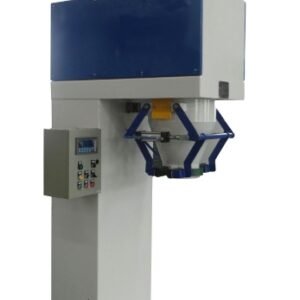Description
Technical Specifications & System Configurations
Conveyor Structure & Drive Systems
-
Frame Construction: Aluminum extrusion or powder-coated steel with adjustable legs
-
Driving Mechanism: Brushless DC motors with variable speed control (0.5-15 m/min)
-
Work Surface: Low-friction polyethylene, silicone-coated, or roller bed surfaces
-
Module Dimensions: Standard widths 600-1200mm, lengths 1.2-3.6 meters per module
Control Systems & Automation Features
-
Speed Synchronization: Matching conveyor speed to operator sewing rhythm
-
Positioning Control: Programmable stop positions with pneumatic lifting mechanisms
-
Production Monitoring: RFID tracking, piece counting, and efficiency reporting
-
Integration Capabilities: PLC connectivity with ERP and MES systems
Workstation Ergonomics & Accessories
-
Height Adjustment: Electric or pneumatic lift systems (600-900mm range)
-
Lighting Integration: LED task lighting with adjustable color temperature
-
Material Management: Thread organizers, trim catchers, and accessory mounts
-
Operator Interface: Touchscreen displays with production data and instructions
Performance Data by Application Type
| Application Type | Line Speed | Stations per Line | Daily Capacity | Quality Improvement |
|---|---|---|---|---|
| Basic Apparel | 2-4 m/min | 8-16 | 500-900 units | 20-30% defect reduction |
| Advanced Modular | 4-8 m/min | 12-24 | 900-1,800 units | 30-45% defect reduction |
| Heavy Material | 1-3 m/min | 6-12 | 200-500 units | 25-40% consistency improvement |
| Technical Textiles | 1.5-4 m/min | 4-10 | 150-400 units | Project-specific results |
Operational Efficiency Metrics:
-
Changeover Time: 15-45 minutes for product style changes
-
Uptime Performance: 94-98% with preventive maintenance
-
Space Utilization: 25-45% better than traditional batch systems
-
Training Time: 1-3 weeks for operator proficiency
Industry-Specific Implementation
Apparel Manufacturing Lines
Sewing conveyor systems excel in high-volume garment production where operations are divided into specialized tasks. A typical T-shirt production line with 12 stations can achieve outputs of 700-900 units per 8-hour shift, with each operator specializing in 2-3 operations. The consistent feeding and positioning reduce handling variations that cause quality issues in traditional systems.
Automotive Interior Production
For automotive seat covers and interior components, sewing conveyors ensure precise pattern matching and consistent seam quality. The systems handle heavy materials like leather and vinyl while maintaining precise alignment through multiple operations. One automotive supplier reduced rework from 12% to 3% after implementing a synchronized conveyor system.
Technical Textiles & Safety Equipment
In production of safety harnesses, parachutes, and industrial textiles, sewing conveyors provide the consistency needed for critical applications. The controlled workflow ensures every stitch meets specifications, with complete traceability through RFID tracking of each unit through the production process.
Footwear & Leather Goods
For shoe upper assembly and bag production, specialized conveyor systems handle multiple components with precise alignment requirements. The continuous flow reduces component mismatching and ensures consistent quality across production batches.
Economic Justification & ROI Analysis
Total Cost of Ownership
-
Equipment Investment: $20,000-$100,000 based on line complexity and automation
-
Installation & Commissioning: $5,000-$25,000 for setup and integration
-
Operating Costs: Energy consumption 3-10 kWh per 8-hour shift
-
Maintenance Requirements: Daily cleaning, monthly mechanical inspection, annual overhaul
ROI Calculation Factors
-
Labor Productivity: 3-6 operators saved per automated line
-
Throughput Increase: 25-60% more units per square meter of factory space
-
Quality Savings: 20-40% reduction in rework and material waste
-
Training Reduction: 50-80% faster operator onboarding
Case Study – Sportswear Manufacturer:
After implementing sewing conveyor systems:
-
Production capacity increased by 35% with same workforce
-
Quality defects reduced from 8% to 2.5%
-
Training time for new operators decreased from 8 to 3 weeks
-
Return on investment achieved in 14 months
Implementation Strategy & Best Practices
Phased Implementation Approach
-
Phase 1: Single pilot line with 6-8 stations for process validation
-
Phase 2: Expansion to multiple lines with process optimization
-
Phase 3: Full integration with cutting and finishing departments
-
Phase 4: Data system implementation for real-time monitoring
Workstation Design Principles
-
Ergonomic Optimization: Adjustable heights and reach distances
-
Material Presentation: Consistent positioning for minimal handling
-
Tool Organization: Dedicated locations for all required tools
-
Lighting Quality: Optimal illumination for task requirements
Quality Integration Methods
-
In-line Inspection: Strategic quality checkpoints along the line
-
Instant Feedback: Real-time defect identification and correction
-
Data Collection: Production metrics for continuous improvement
-
Standardized Work: Consistent methods across all operators
Future Development & Industry Trends
Technology Evolution
-
Artificial Intelligence: Computer vision for automatic quality inspection
-
IoT Integration: Real-time performance monitoring and predictive maintenance
-
Advanced Robotics: Automated loading and unloading at stations
-
Digital Twin Technology: Virtual simulation for line optimization
Market Directions
-
Flexible Manufacturing: Quick changeover for small batch production
-
Sustainability Focus: Energy-efficient designs and reduced material waste
-
Customization Capability: Support for mass customization requirements
-
Global Standards: Compliance with international safety and ergonomic requirements






Reviews
There are no reviews yet.